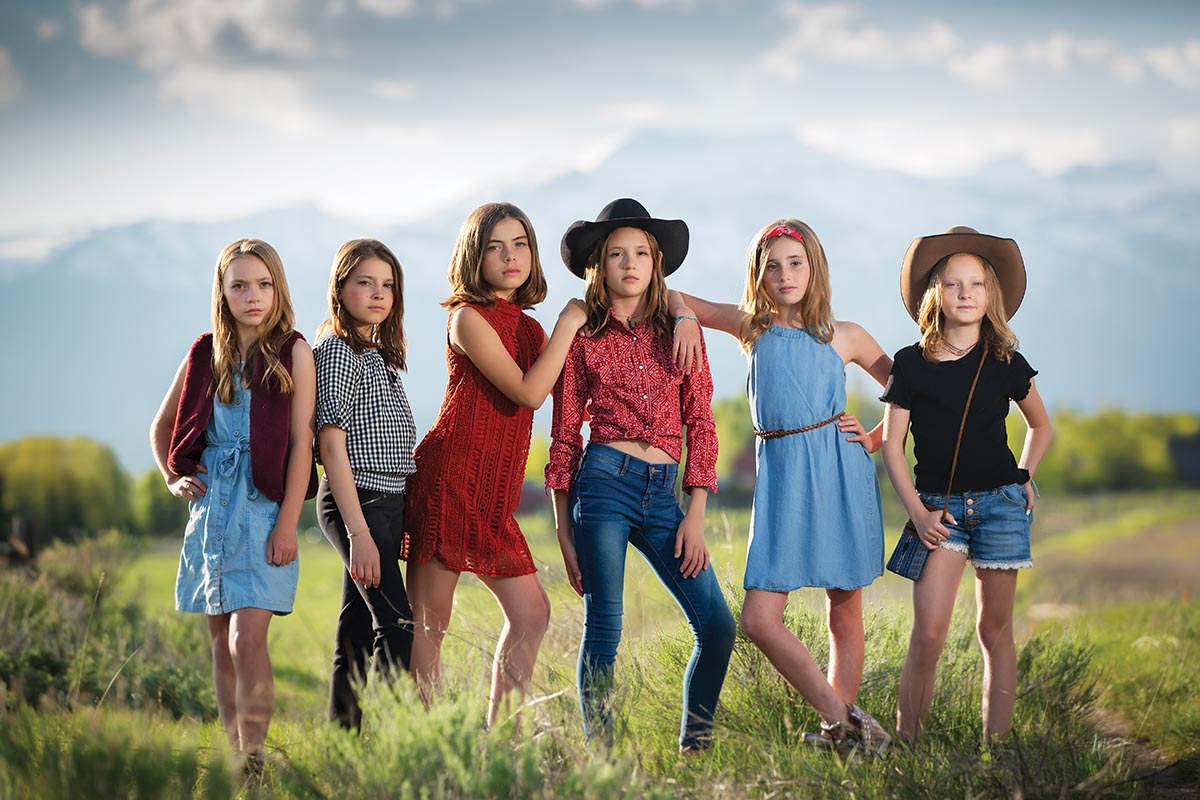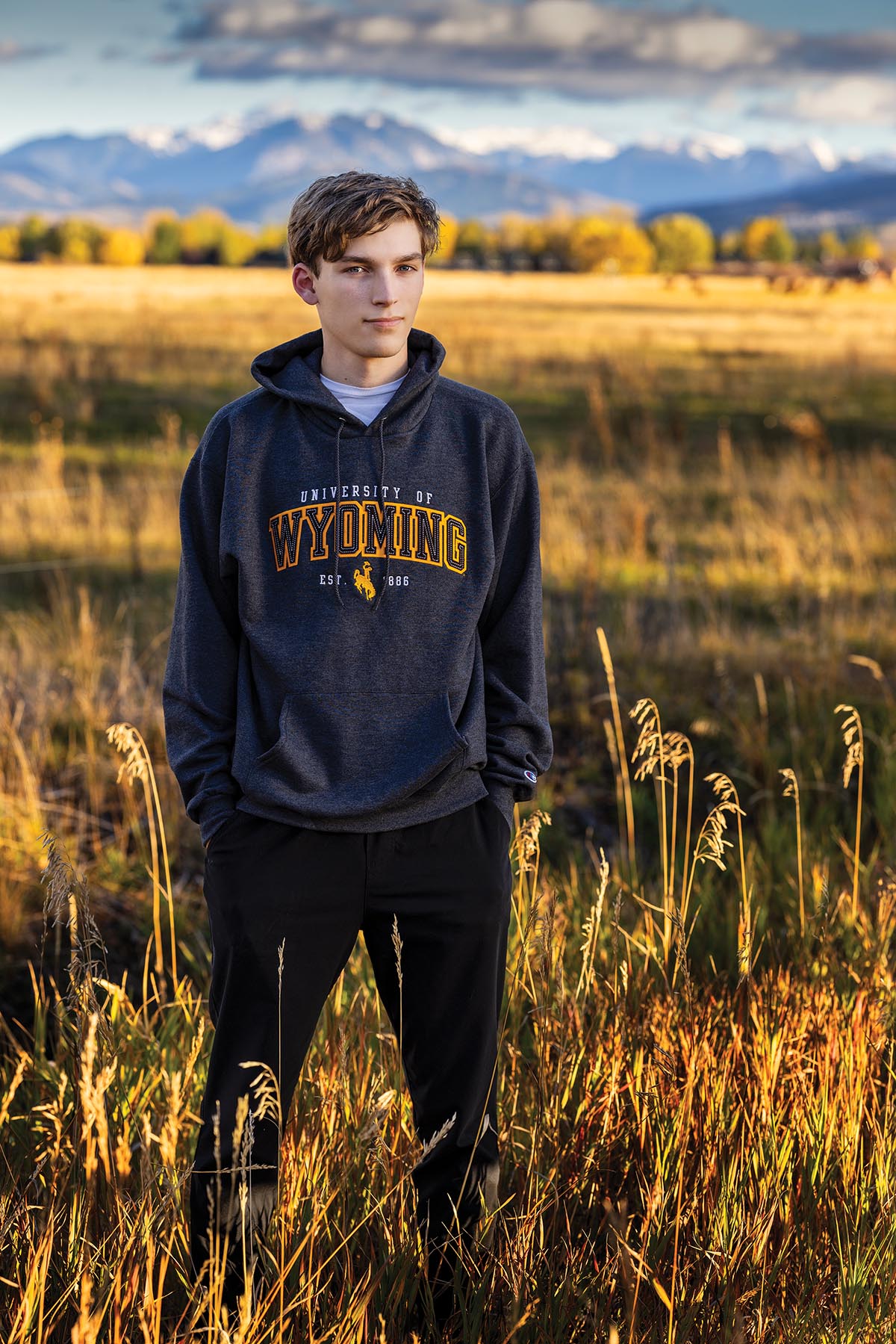What does it take to run a successful portrait studio in one of the most expensive ZIP codes in America? For two decades, Florence McCall has been building connections with a range of clients in and around Jackson Hole, Wyoming. Her commercial-style lighting and customized communications are designed to appeal to discerning photography lovers. Hers is a work-intensive strategy, different from the more casual approach of many portrait photographers, and that’s what’s differentiated her business and endeared her to a dedicated clientele.

McCall started out as a photojournalist for a small newspaper in San Francisco, where her regular assignments included photographing business executives throughout the Bay Area. It was the definition of learning on the job. She gained a critical education in working with high-stature individuals to produce quality editorial portraits on location regardless of setting or circumstances.
These lessons would prove invaluable when McCall followed a calling to live the mountain life and moved to Jackson, where she opened Florence McCall Photography. She dabbled in ski photography before transitioning into weddings and then portraits. The work has involved plenty of interactions with high-net-worth individuals who frequent the area. And many of her location sessions make use of the lighting, posing, and composition techniques she honed while photographing CEOs in the Bay Area.
LIGHTING IS THE WAY
Lighting has been critical to McCall’s portraiture. She describes her technique as an Annie Liebowitz-style adaptation of Rembrandt lighting, applying complementary lighting with off-camera strobes and adjusting the light using scrims and light boxes to separate subjects from the background. Her aim is to capture the beautiful detail of the background—particularly important for outdoor portraits in Jackson Hole—while still placing flattering light on subjects’ faces.
“When I came to Jackson, people started hiring me specifically because of my approach to lighting,” says McCall. “Everyone does natural light around here. I offered a more commercial style of light that people found appealing. You get a beautiful shape on people’s faces, where the eyes really pop, which helps make a connection in the portrait that I really love.”

She uses a more labor-intensive, time-consuming process, but the results she achieves have been a great differentiator in a market where many clients are looking for something more polished than a natural light setup in a local park. In fact, when McCall was considering a move toward the trend of natural light photography, clients reaffirmed that they chose her for her aesthetic and technique, not because she was doing what everyone else was.
“That was a revelation,” she says. “I realized that my style and approach are what makes me special, not trying to mimic whatever trend is currently popular. It helped me believe in the value I provide and have confidence in what I’m doing because it does take a lot of work. I’m bringing three assistants and a lot of gear like a commercial photographer. I’m exhausted when I’m done with a shoot. That validation makes it worth it and helps me have the confidence to keep the vision going.”

SELLING ART
And with confidence and vision comes the potential for elevated sales. McCall focuses her efforts on wall art, preconditioning clients for substantial orders from their first interactions. Those interactions usually begin with her website, where she intentionally displays the types of photographs she wants to create: portraits and headshots.
“If you have a website that has seven different portfolios with all kinds of different photography, it’s too confusing for clients,” says McCall. “Sure, I can take all sorts of pictures, but that’s not the point. Clients want to come to a photographer who is really good at the kind of photography they want, someone who knows exactly what they’re doing and can deal with any situation.”

Once clients have reviewed her portfolio and made contact, the vetting process begins. McCall asks a series of questions to determine if they align with what she offers and if their end goal is the same as hers. People who are looking only for digital images or a Christmas card picture are not her clients. But if they’re interested in investing in wall art to commemorate their family, then the process continues.
This is why it’s important not to hide anything during the initial client conversations, says McCall. The more open you can be about your process, your goals, and your pricing, the more quickly you can identify your target clients.
“I used to be afraid to talk about prices,” she says. “I was insecure about it, but I learned that if I want to align with someone, I have to be up front about what I cost and the value I provide. If you hide that and surprise them at the end, you end up losing because they’re not expecting it, and that leads to problems.”

Once she’s determined she’s in sync with a client, McCall schedules an in-person or Zoom meeting, where she goes over pricing again and formulates a plan to create the images for the client’s desired end products. She follows up this meeting with multiple texts or emails to work out specifics for the session, and she repeats key details to document everything that’s been agreed on. All told, it’s a fair amount of legwork up front, but that work leads to a smooth ordering process after the session.
“A lot of photographers skip these early stages or rush through it because they’re in a hurry to get to the session,” observes McCall. “If you do that, you can end up wasting so much time because you’re not on the same page with your client, and you’re not creating the right images for what they ultimately want to purchase.”
This abundance of communication gets busy clients to slow down and pay attention. McCall finds that personal interactions work better than automated messages for her clients because she’s able to make a connection and verify that they aren’t just blindly approving things without understanding what’s involved. All the while, she strives to strike a balance between persistence and flexibility. “The more fluid and easygoing you can be about communications, the more appreciative clients will be,” she says. “People are overwhelmed, so try to make it easy for them. Make it simple. Be supportive. That goes a long way when building these client relationships.”

COLLABORATION WINS
Early in her career, McCall felt like she was doing more battling than collaborating with clients. Eventually, she realized that her disputes arose from a lack of confidence in her skills and approach. As she matured as an artist, that confidence grew, helped in no small part by the validation given by many happy clients. Now, with the self-assurance that comes with experience, McCall finds her client interactions much more collaborative and fulfilling. It’s allowed her to be more creative and approach each session with the assuredness that she can deliver something clients will love.
“Confidence is really important,” she says. “I hear a lot of other photographers, particularly women, who are more insecure at times, and it affects how they work with their clients. It helps to remember that people need photos for all sorts of reasons, and they need your unique approach to those photos. If you have confidence to go out there, throw your shoulders back, and tell yourself, I got this, then you can accomplish all kinds of things.”
Jeff Kent is editor-at-large.
Tags: portrait photography


 View Gallery
View Gallery


